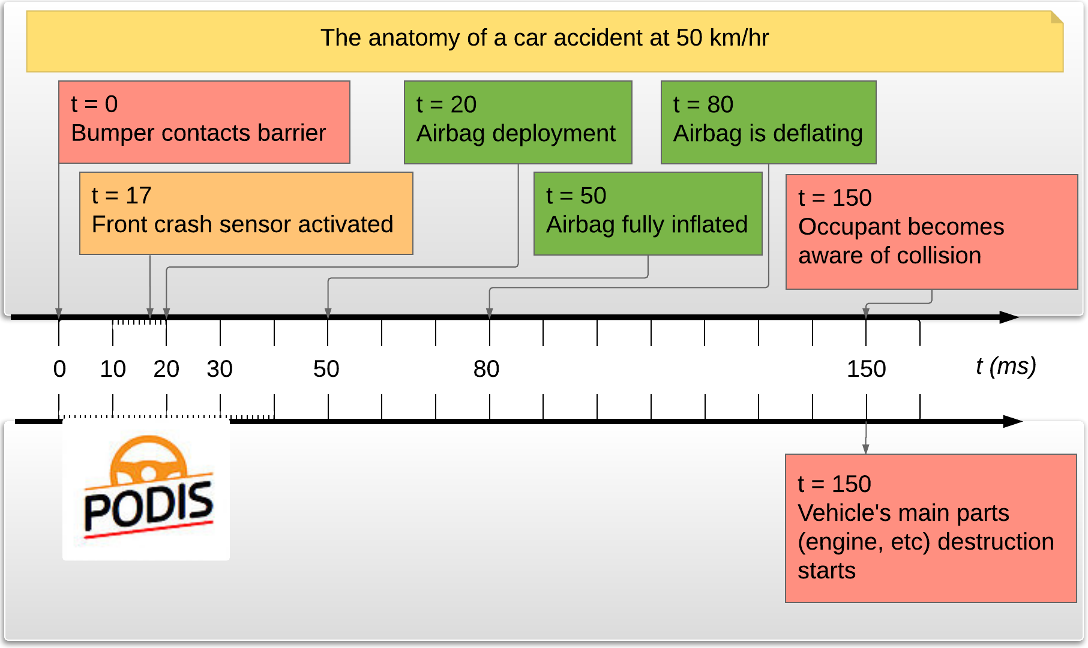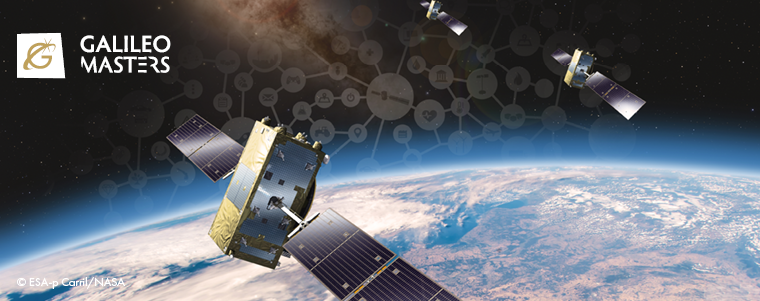PODIS: AI Podcast Highlights 10 Years of Innovation
After 10 years of development in stealth mode, we’re excited to unveil our patented crash detection technology with zero false alarms through an innovative AI-generated podcast. By providing our website, public references, and patent details to an AI system, we’ve produced a dynamic conversation highlighting the potential of our groundbreaking technology.
This podcast delves into how our crash detection solution significantly reduces response times, saves lives, and ensures that our partners retain full control of their data. It also provides insight into the journey we’ve taken from AWS SaaS solutions to licensing our technology to major players across multiple industries.
Watch the full video and discover how PODIS is leading the way in secure, data-driven innovation.

Whitepaper: Automatic Crash Notification (ACN) systems
1. What is an Automatic Crash Notification system?
An Automatic Crash Notification system senses a vehicle’s crash and sends an instant notification with critical information to a Telematics Service Provider (TSP) or to a local Public Safety Answering Point (PSAP), and help is on the way without the victim(s) or a witness making a phone call to 911/112.
2. A strong statement for the importance of ACN systems
The 28 EU countries agreed and voted that all new cars sold in EU after March 31st, 2018, must be equipped with the eCall system. The eCall is an ACN system.
3. Why are ACN systems important?
The eCall moto is “eCall: Time saved = lives saved”. It is based on the “Golden Hour” principle. The golden hour recognizes that casualties will have a better chance of survival if they are delivered to a definite care (hospital) within one hour from the time of the accident. The golden hour includes the time for the call-out, travel to the incident, extrication, transport to hospital and the time to resuscitate within the emergency department. The golden hour efficiency is affected by the time elapsed until somebody reports the accident, the time for the PSAP to fix the location which, when based on mobile networks, can vary from seconds to several hours depending on the country.
ACN systems are important because they eliminate the time for the call-out and the time for fixing the location of the accident.
NHTSA rephrases the same as “Automatic crash notification systems can reduce death and disability by decreasing the time it takes for emergency medical services to arrive at a crash scene and transport victims to a hospital. More lives can be saved and the severity of injuries reduced if a crash victim receives medical care as soon as possible, particularly within the first hour following a crash. ACN is especially beneficial to crash victims in rural areas, where there are typically fewer or no witnesses to call emergency responders.”
4. How many lives will be saved with ACN systems?
A 2002 study by Clark and Cushing, based on US data, suggests a 6% fatality reduction is possible if all time delays for notification of Emergency Medical Services (EMS) were eliminated even if methods for dispatch and treatment remained the same. Monash University Accident Research Centre, Melbourne, Australia, calculated that almost 11% of all passenger vehicle occupant fatalities would be saved, assuming all vehicles in Australia were fitted with ACN. (Annals of Advances in Automotive Medicine. Association for the Advancement of Automotive Medicine. Scientific Conference [2008, 52:85-92], http://europepmc.org/abstract/MED/19026225).
The UN reports that one person dies in a road accident every thirty seconds; That is 1.3 million dead mothers, fathers and children in 2016, with more each year we fail to fix the problem.
Actually, the impact of road accidents goes beyond the individuals involved. It affects families, communities and the society at large, while the associated costs far exceed the damages occurred during the accident.
5. Is there an indication of any cost-center associated with not having ACN in place?
The delay of a rescue center to trace the location of a mobile emergency call is valued by EENA (European Emergency Number Association) at €1,300.00 per minute, with an EU wide yearly cost of €3,910,000,000 (conservative calculation as per EENA).
6. What types of ACN systems exist today?
There are two types of ACN systems available today:
- On-vehicle, permanent installed, device using a mobile network for data connectivity, and
- Phone/tablet/phablet apps and clients
6.1 On-vehicle, permanent installed
The device is connected to the vehicle’s sensors.
Their strengths are:
- The device is attached to the on-board sensors. This grants it immediate access to the vehicle’s control systems, like the breaks system, air-bags activation, and steering. Thus, a possible accident can be identified quickly and reliably.
- Sensors’ and device’s data can be recorded on the device and used as evidence, similarly to flight recorders.
Their weaknesses are:
- The end to end system i.e., the device, the wiring, the connections and the antenna, must be fully functioning for a period that must equal the time needed to process the signals and transmit accident related information. This period of time is finite in the range of milliseconds. The survivability of involved system elements, especially wiring and antennas, is not guaranteed in cases of severe accidents and in cases where the impact point is in the proximity of their installation.
- Safety and Security: In case the wireless data connection is hacked, then vital vehicle control systems can be compromised. A notable example is a 2015 case, where 1.4 million SUVs were recalled because their on-board entertainment system had a security gap that could allow a hacker to gain control of the vehicle.
- These systems can be installed only in cars and not on motorcycles. Motorcycles can be involved in more severe and deadlier accidents
- eCall specific: The European fleet will be fully covered within a period of around 30 years. The technology will always be similar to the one of the first installation in 2018 for backward compatibility reasons.
The eCall is one example already mentioned. Similar systems are also available by General Motors (the OnStar system), Volvo, Peugeot, and others.
6.2 Phone/tablet apps and clients
These are systems where the clients are applications installed on mobile personal devices, like smartphones and/or tablets.
Their strengths are:
- No vehicle specific installation is required. The application monitors the cell phone sensors and sends an alarm when their readings exceed specific thresholds.
- The application can be automatically updated without any action from the end-user.
- No indirect costs are involved when the end-user is using a mobile subscription with a data plan.
Their weaknesses are:
- The sensors in personal mobile devices are designed to address specific user needs, like gaming. They have very good specifications on their sensitivity and their resolution, but they have minimum range: The best accelerometer in a mobile phone can measure acceleration values of ±8g, when the forces involved in a car accident can create a negative acceleration of 100g. These sensors cannot record an accident. They can only POSSIBLY identify the beginning of an accident.
- Any unusual sensor readings, a phenomenon common on cell phones, can be misinterpreted as the POSSIBILITY of an accident and initiate an ALARM dispatch procedure, when they most likely are FALSE ALARMS (also noted as False Positives). The sheer amount of such FALSE ALARMS will create a Denial Of Service to the Public Safety Answering Point. There are, however, systems that successfully address this, like the PODIS ACN system, whose patent algorithm eliminates any False Positives.
7. Are ACN systems relevant only to PSAPs?
The ACN systems are not only relevant to PSAPs (Public Safety Answering Points). They are also relevant to Road Side Assistance companies and, not so surprisingly, to Mobile Operators. They all:
- Maximise the benefits of the Golden Hour
- Enhance Customer Experience
- Create a positive social impact
- Reduce Churn
While:
- Insurance companies / Road Side Assistance companies reduce the cost associated with road accidents reimbursements / support, respectively, as early arrival on a crash site prevents bigger damage and it reduces the time and the cost of medical care.
- PSAPs, and Road Side Assistance Companies, use resources in an efficient manner and increase their effectiveness
- Mobile operators use their existing interconnections with Emergency Services
8. Closing note
“Despite improvements in road safety, we still face shocking injury and fatality figures. We simply cannot afford a ‘business as usual’ approach to hinder our respone”
Message from Ban Ki-Moon, UN Secretary-General, 2nd Global High-Level Conference on Road Safety (18-19 November 2015)


